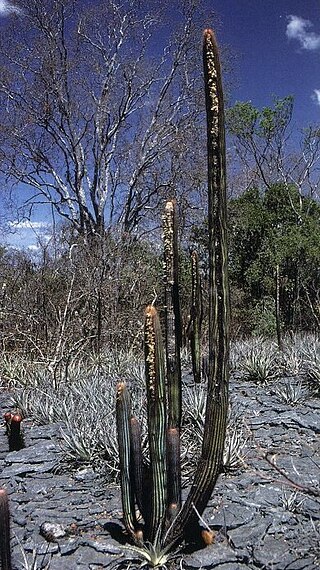
Micranthocereus dolichospermaticus is a species of plant in the family Cactaceae. It is endemic to Brazil, where it is confined to the states of Bahia and Minas Gerais. Its natural habitat is rocky areas. It is threatened by habitat loss.
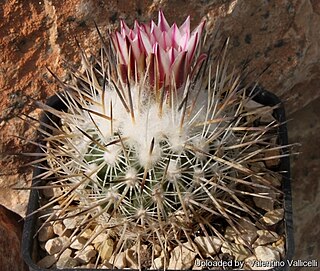
Rapicactus mandragora, synonym Turbinicarpus mandragora, is a species of plant in the family Cactaceae.

Uebelmannia gummifera is a species of plant in the family Cactaceae. It is endemic to Brazil. Its natural habitat is dry savanna. It is threatened by habitat loss.

Rebutia minuscula is a species of cactus from South America found in northern Argentina and Bolivia. It is the type species of the genus Rebutia. As its synonym Rebutia senilis it has gained the Royal Horticultural Society's Award of Garden Merit. Its cultivars 'Krainziana', 'Marsoneri' and 'Violaciflora' are also listed as having gained the Award of Garden Merit.

Pelecyphora strobiliformis is a species of cactus from Mexico. Its numbers in the wild have been reduced by collecting; it is listed in Appendix I of CITES but only as of "Least Concern" by the IUCN.
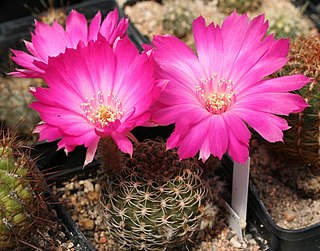
Lobivia backebergii is a species of flowering plant in the cactus family Cactaceae, native to eastern Bolivia and southern Peru.

Cleistocactus tominensis is a species of columnar cactus in the genus Cleistocactus, endemic to Bolivia, where it is found in forests, on cliffs, and in inter-Andean valleys at altitudes of 900 to 2,200 meters.
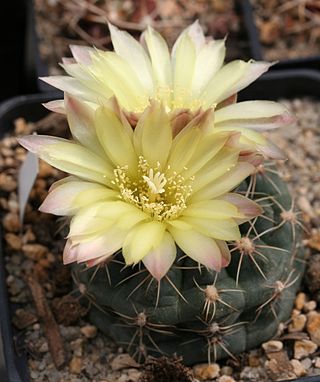
Gymnocalycium andreae is a species of Gymnocalycium from Argentina.
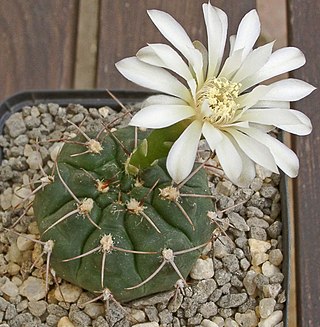
Gymnocalycium ochoterenae is a species of Gymnocalycium from Argentina.
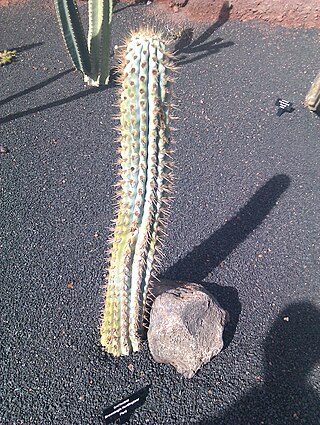
Browningia hertlingiana is a species of Browningia found in Peru.

Cleistocactus buchtienii is a species of columnar cacti in the genus Cleistocactus.
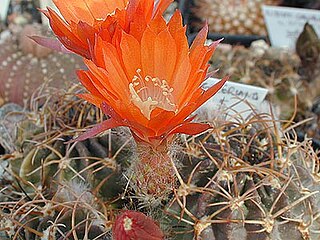
Lobivia tegeleriana is a species of Lobivia found in Peru.

Loxanthocereus xylorhizus is a species of Loxanthocereus found in Peru.
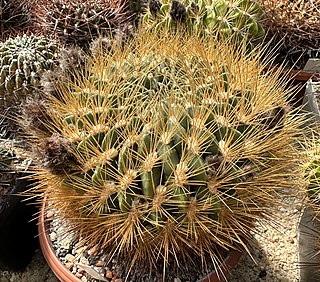
Lobivia chrysochete is a species of Lobivia found in Bolivia and Argentina.
Leucostele tunariensis is a species of columnar cactus native to South America.
Lobivia pugionacantha, is a species of Lobivia found in Argentina and Bolivia. Lobivia is a genus of cacti.

Soehrensia smrziana is a species of Soehrensia found in Argentina.

Rebutia padcayensis is a species of Rebutia found in Bolivia and Argentina.

Micranthocereus purpureus is a species of Micranthocereus found in Brazil.
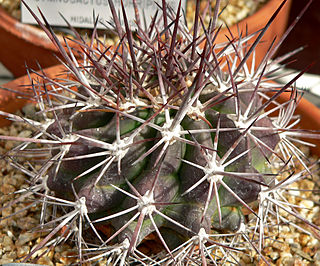
Ferocactus lindsayi is a species of Ferocactus found in Mexico.





















